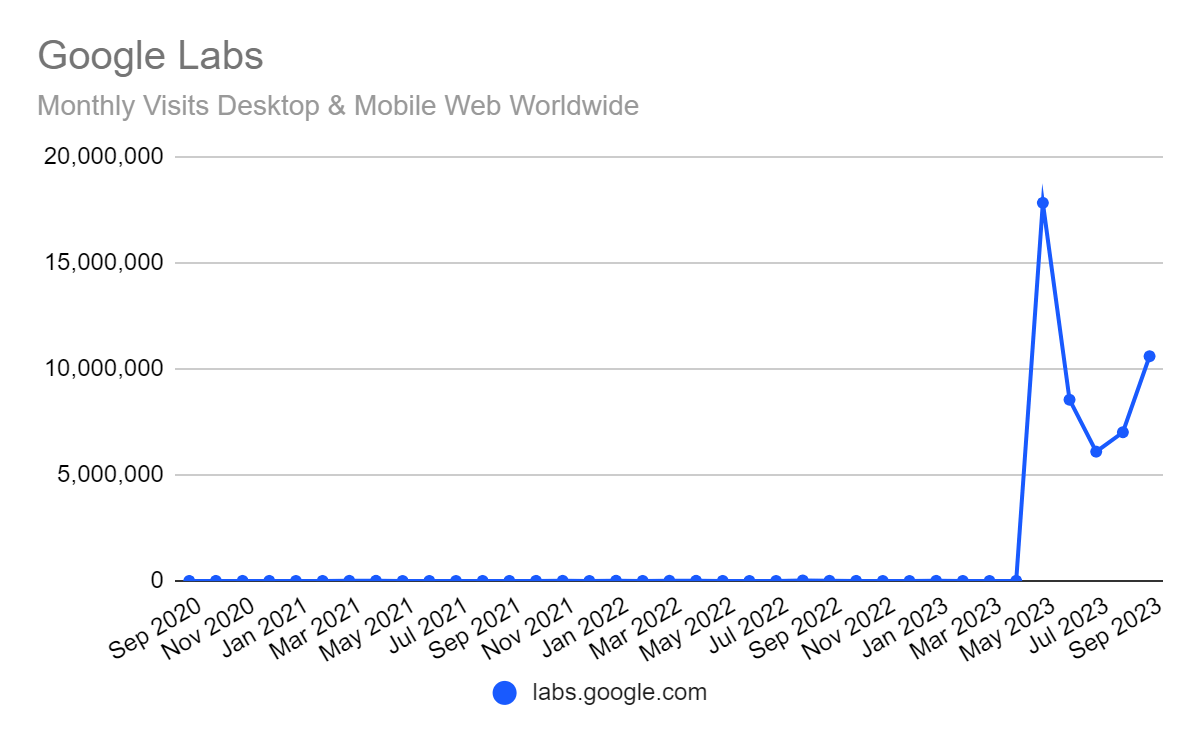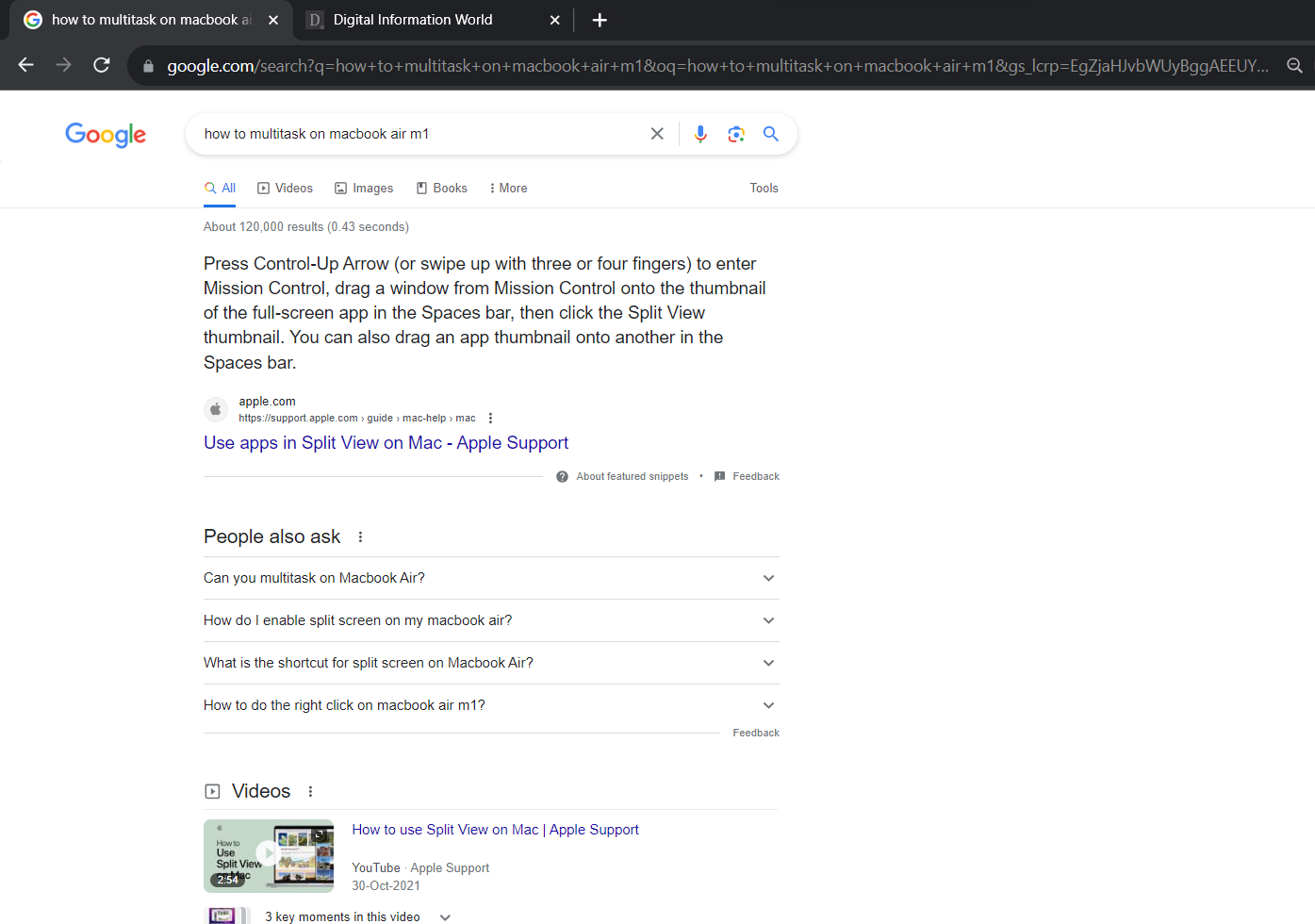Google Labs experienced a massive traffic boost, as per SimilarWeb, skyrocketing from less than 13,000 visits to an astounding 17 million in May, thanks to the introduction of the Search Generative Experience (SGE). This incredible interest is mainly because SEO experts and search enthusiasts want to see what this new tech can do. SGE integrates generative AI, similar to what powers ChatGPT and Google's Bard (bard.google.com), right into search results.
In a rapidly evolving digital information space, Microsoft has already incorporated OpenAI's GPT-4, the latest AI tech, into its Bing search engine. And companies like Perplexity are also making waves with generative AI, redefining the search and knowledge discovery experience.
SGE (Search Generative Experience), Google's response to this AI revolution, holds a unique place. Unlike Bard, it doesn't sit on a separate subdomain, making it tricky to track its activity. But it's front and center on the Google Labs website, and people are flocking to it.
Among Google's array of beta products, SGE stands out as a potential game-changer, poised to disrupt the established norms of search engine optimization and marketing.
In a typical Google search today, a query on "how to multitask on macbook air m1" can give you one or two ads followed by maybe some Wikipedia descriptions and some other top-ranked web pages or videos.
Photo: DIW
But SGE does things differently. Initially, you might not see ads at the top, but the top web page takes a backseat to content generated by Google's AI. This new AI-powered content box (aka chat) not only answers your question but also invites searchers to keep on interacting with it.
H/T: @thebondandonly
This change has piqued the interest of businesses and professionals reliant on web traffic. In the past, the focus was on snagging the top spot in Google's search results. But the future might revolve around convincing the AI to include your content in its summary. If SGE becomes mainstream, the #1 organic result could find itself at the bottom of the page, where few users bother to look.
But here's the good news: you can still pay your way to the top of search results, so traditional methods aren't going away anytime soon.
Read next: Google's Pledge to Secure AI: What You Need to Know
In a rapidly evolving digital information space, Microsoft has already incorporated OpenAI's GPT-4, the latest AI tech, into its Bing search engine. And companies like Perplexity are also making waves with generative AI, redefining the search and knowledge discovery experience.
SGE (Search Generative Experience), Google's response to this AI revolution, holds a unique place. Unlike Bard, it doesn't sit on a separate subdomain, making it tricky to track its activity. But it's front and center on the Google Labs website, and people are flocking to it.
Among Google's array of beta products, SGE stands out as a potential game-changer, poised to disrupt the established norms of search engine optimization and marketing.
In a typical Google search today, a query on "how to multitask on macbook air m1" can give you one or two ads followed by maybe some Wikipedia descriptions and some other top-ranked web pages or videos.
Photo: DIW
But SGE does things differently. Initially, you might not see ads at the top, but the top web page takes a backseat to content generated by Google's AI. This new AI-powered content box (aka chat) not only answers your question but also invites searchers to keep on interacting with it.
H/T: @thebondandonly
This change has piqued the interest of businesses and professionals reliant on web traffic. In the past, the focus was on snagging the top spot in Google's search results. But the future might revolve around convincing the AI to include your content in its summary. If SGE becomes mainstream, the #1 organic result could find itself at the bottom of the page, where few users bother to look.
But here's the good news: you can still pay your way to the top of search results, so traditional methods aren't going away anytime soon.
Read next: Google's Pledge to Secure AI: What You Need to Know



